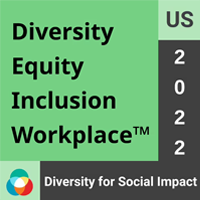Blog


Why Smart Companies Are Breaking the 9–5 Model
The 9–5 workday used to be the gold standard of productivity. But times have changed—and the smartest companies know it.
Today, results matter more than rigid schedules. Flexibility beats face time. And forward-thinking teams are trading outdated hours for output-driven models that support productivity, well-being, and growth.
If you’re still running your business like it’s 1995, it’s time to rethink what “working hours” really mean—and how breaking free from the traditional 9–5 could be your biggest competitive advantage.
The Problem with the 9–5
The 9–5 model was built for factory floors, not modern businesses. It assumes everyone works best at the same time, in the same place, for the same number of hours.
But here’s the reality:
- Not all roles require 8 hours a day.
- Not all people thrive in the same time window.
- And not all talent lives in your time zone.
Clinging to rigid schedules can limit performance, create burnout, and make it harder to attract top talent—especially in today’s global, remote-first world.
Flexibility Isn’t a Perk—It’s a Performance Driver
Smart companies are shifting focus from hours worked to impact delivered. When you give people the flexibility to work how (and when) they work best, you get:
- Higher productivity: People do more when they control their schedules.
- Better retention: Flexibility is one of the most in-demand job benefits today.
- Stronger global teams: Time zone differences become an asset, not a problem.
It’s not about working less. It’s about working smarter—and building systems that support that shift.
Global Hiring Makes This Model Work
When you break the 9–5 model, you open the door to hiring across borders and time zones. You can build a team that works around the clock—without burning anyone out.
Imagine:
- A designer in South America finishing assets while your team sleeps.
- A customer service rep in the Philippines resolving tickets before your day even starts.
- A developer in Eastern Europe pushing code updates overnight.
It’s not just possible—it’s powerful. You move faster, serve customers better, and stay lean without losing momentum.
Build a Culture of Trust, Not Timecards
The biggest shift in breaking the 9–5 isn’t logistical—it’s cultural. Smart leaders focus on:
- Clear expectations over micromanagement
- Measurable results over monitored hours
- Autonomy and accountability over control
Remote and flexible teams thrive when they’re aligned on goals, empowered with the tools they need, and trusted to deliver—wherever and whenever they work.
What’s Next: The Rise of Asynchronous Work
Asynchronous work—where communication and collaboration don’t happen in real time—is the next evolution of breaking the 9–5.
This model enables teams to work across time zones, focus deeply without constant interruptions, and deliver on deadlines without needing to be online at the same time.
For global teams, it’s a game-changer. You reduce meeting fatigue, increase output, and build a truly resilient, scalable business.
Smart Companies Aren’t Just Breaking the 9–5—They’re Redefining Work
Let go of outdated systems. Focus on results. Embrace flexibility. And hire the best people—no matter where they live or what time they work.
Because work isn’t about when or where anymore. It’s about what gets done, and who helps you do it best.
At Thankz, we help businesses break free from outdated models by building global teams that work flexibly and deliver results. From hiring to compliance and onboarding, we manage the details so you can focus on growth.
Visit our website or contact us today to learn how we can help you build a high-performing team without being tied to the 9–5. Let’s make the world your office.


![[Veteran or Service-Disabled Veteran] Disability-Owned Business circular certification badge with text shown in circular orientation and with Disability:IN icon logo in center](https://www.thankz.com/blog/wp-content/themes/thankz/images/dobe-badge.png)

